
Thomas Cole Painting Reproductions 3 of 3
1801-1848
English Hudson River School Painter
Thomas Cole, recognized in his day as a leading figure of American landscape painting, was born on February 1, 1801, in Bolton-le-Moor, England. His formative years were marked by practical experience rather than formal instruction - as a youth he served first as an engraver’s assistant, then as an apprentice to a calico-print designer. In these early positions, he became acquainted with the nuances of craft and design, an introduction that would later inform his sensitive treatment of natural forms. In 1818, he emigrated with his family to the United States, initially spending time in Philadelphia before joining them in Steubenville, Ohio, in 1819.
While in Ohio, Cole encountered an itinerant portrait painter named Stein who guided his first ventures into oil painting. Though this mentorship was brief, it proved foundational, kindling Cole’s ambition to observe nature closely and replicate it with fidelity. His inclination to capture the distinctive traits of living foliage took further shape in Pittsburgh in 1823, where he made his earliest recorded attempts at drawing directly from nature. Sketching branches and trees with noticeable precision, he revealed a curiosity about both the aesthetics and emotional resonance of the landscape.
In 1825 Cole moved to New York, where he embarked on an extended tour along the Hudson River and the Catskill Mountains. The sketches and paintings he produced during this period displayed a remarkable understanding of atmospheric qualities and a willingness to explore the grandeur of the American scenery. Later that same year, three of his landscapes were noticed and purchased by prominent figures - John Trumbull, William Dunlap, and Asher B. Durand. This recognition signaled Cole’s entrance into a lively cultural scene. By January 1826, he was elected a founding member of the National Academy of Design and began receiving commissions from discerning patrons such as Daniel Wadsworth and Robert Gilmor, Jr.
Despite the commercial success of these American landscapes, Cole longed to produce a “higher style of landscape” that could embrace moral and religious themes. His initial attempts in this more elevated register garnered mixed responses and prompted a decision to study abroad. In June 1829 he sailed for England, where he examined the works of Old Masters and conferred with leading artists Joseph Mallord William Turner and John Constable. Subsequent travels in France and Italy left a deep impression, particularly the landscapes of Rome and Florence, where he conceived of a multi-part series illustrating the arc of a civilization’s rise and fall.
This idea finally bore fruit upon Cole’s return to the United States in 1832, when he convinced Luman Reed to sponsor what became "The Course of Empire." Completed in 1836, these five canvases were well-received, presenting a reflection on the transience of human achievement. The same period saw him producing imaginative works such as "The Departure" and "The Return," as well as two versions of "The Voyage of Life." His capacity to interweave narrative allegory with elements of carefully observed landscape set his work apart from more conventional depictions of the American wilderness.
In 1836 he married Maria Barstow and settled in Catskill, New York. There, he remained closely engaged with the surrounding natural environment, continuing to paint vistas of the Hudson and the Catskill Mountains. This same year, he published “Essay on American Scenery,” articulating his profound convictions about the spiritual and national significance of the American landscape. The essay conveys his belief that nature possesses an intrinsic capacity to elevate the human spirit, a sentiment subtly interlaced through his larger compositions.
A second European sojourn took place in 1841, during which Cole traveled extensively in Italy. The landscapes of Sicily, including the imposing Mt. Etna, left their mark on him, resulting in several paintings that captured the island’s unique atmosphere. Upon returning to Catskill in 1842, he accepted the young Frederic Edwin Church as a pupil, a mentorship of some consequence for the future of American landscape painting. By the mid-1840s, Cole was producing works noteworthy for a heightened attention to light and atmosphere, although he also labored on a new ambitious series, "The Cross and the World," which was never completed.
His death on February 11, 1848, at the age of forty-seven, brought forth considerable tributes and a memorial exhibition in New York. His influence upon younger painters was both immediate and long-lasting, seen most directly in the art of Jasper F. Cropsey and Church. Though Thomas Cole’s career was cut short, his explorations of the American wilderness - and the philosophical, moral weight he attributed to it - established a lasting precedent for how landscape was conceived and depicted in the cultural imagination of the United States. His legacy continues to resonate in the quieter corners of the Catskills, where one still senses the fervent devotion with which he observed every tree, mountain, and passing cloud.
While in Ohio, Cole encountered an itinerant portrait painter named Stein who guided his first ventures into oil painting. Though this mentorship was brief, it proved foundational, kindling Cole’s ambition to observe nature closely and replicate it with fidelity. His inclination to capture the distinctive traits of living foliage took further shape in Pittsburgh in 1823, where he made his earliest recorded attempts at drawing directly from nature. Sketching branches and trees with noticeable precision, he revealed a curiosity about both the aesthetics and emotional resonance of the landscape.
In 1825 Cole moved to New York, where he embarked on an extended tour along the Hudson River and the Catskill Mountains. The sketches and paintings he produced during this period displayed a remarkable understanding of atmospheric qualities and a willingness to explore the grandeur of the American scenery. Later that same year, three of his landscapes were noticed and purchased by prominent figures - John Trumbull, William Dunlap, and Asher B. Durand. This recognition signaled Cole’s entrance into a lively cultural scene. By January 1826, he was elected a founding member of the National Academy of Design and began receiving commissions from discerning patrons such as Daniel Wadsworth and Robert Gilmor, Jr.
Despite the commercial success of these American landscapes, Cole longed to produce a “higher style of landscape” that could embrace moral and religious themes. His initial attempts in this more elevated register garnered mixed responses and prompted a decision to study abroad. In June 1829 he sailed for England, where he examined the works of Old Masters and conferred with leading artists Joseph Mallord William Turner and John Constable. Subsequent travels in France and Italy left a deep impression, particularly the landscapes of Rome and Florence, where he conceived of a multi-part series illustrating the arc of a civilization’s rise and fall.
This idea finally bore fruit upon Cole’s return to the United States in 1832, when he convinced Luman Reed to sponsor what became "The Course of Empire." Completed in 1836, these five canvases were well-received, presenting a reflection on the transience of human achievement. The same period saw him producing imaginative works such as "The Departure" and "The Return," as well as two versions of "The Voyage of Life." His capacity to interweave narrative allegory with elements of carefully observed landscape set his work apart from more conventional depictions of the American wilderness.
In 1836 he married Maria Barstow and settled in Catskill, New York. There, he remained closely engaged with the surrounding natural environment, continuing to paint vistas of the Hudson and the Catskill Mountains. This same year, he published “Essay on American Scenery,” articulating his profound convictions about the spiritual and national significance of the American landscape. The essay conveys his belief that nature possesses an intrinsic capacity to elevate the human spirit, a sentiment subtly interlaced through his larger compositions.
A second European sojourn took place in 1841, during which Cole traveled extensively in Italy. The landscapes of Sicily, including the imposing Mt. Etna, left their mark on him, resulting in several paintings that captured the island’s unique atmosphere. Upon returning to Catskill in 1842, he accepted the young Frederic Edwin Church as a pupil, a mentorship of some consequence for the future of American landscape painting. By the mid-1840s, Cole was producing works noteworthy for a heightened attention to light and atmosphere, although he also labored on a new ambitious series, "The Cross and the World," which was never completed.
His death on February 11, 1848, at the age of forty-seven, brought forth considerable tributes and a memorial exhibition in New York. His influence upon younger painters was both immediate and long-lasting, seen most directly in the art of Jasper F. Cropsey and Church. Though Thomas Cole’s career was cut short, his explorations of the American wilderness - and the philosophical, moral weight he attributed to it - established a lasting precedent for how landscape was conceived and depicted in the cultural imagination of the United States. His legacy continues to resonate in the quieter corners of the Catskills, where one still senses the fervent devotion with which he observed every tree, mountain, and passing cloud.
68 Thomas Cole Paintings
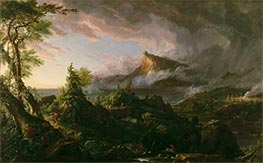
The Course of Empire: The Savage State 1834
Oil Painting
$2526
$2526
Canvas Print
$54.62
$54.62
SKU: CTH-19117
Thomas Cole
Original Size: 99 x 160 cm
Historical Society, New York, USA
Thomas Cole
Original Size: 99 x 160 cm
Historical Society, New York, USA

The Course of Empire: The Arcadian or Pastoral State 1834
Oil Painting
$2467
$2467
Canvas Print
$54.62
$54.62
SKU: CTH-19118
Thomas Cole
Original Size: 99 x 160 cm
Historical Society, New York, USA
Thomas Cole
Original Size: 99 x 160 cm
Historical Society, New York, USA
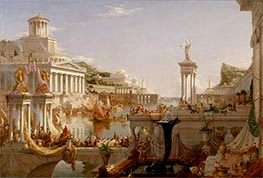
The Course of Empire: The Consummation of Empire 1836
Canvas Print
$56.14
$56.14
SKU: CTH-19119
Thomas Cole
Original Size: 129.5 x 193 cm
Historical Society, New York, USA
Thomas Cole
Original Size: 129.5 x 193 cm
Historical Society, New York, USA

The Course of Empire: Desolation 1836
Oil Painting
$2231
$2231
Canvas Print
$54.62
$54.62
SKU: CTH-19120
Thomas Cole
Original Size: 99 x 160 cm
Historical Society, New York, USA
Thomas Cole
Original Size: 99 x 160 cm
Historical Society, New York, USA
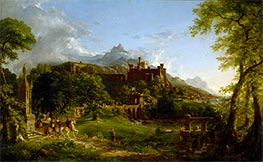
The Departure 1837
Oil Painting
$4704
$4704
Canvas Print
$54.62
$54.62
SKU: CTH-19121
Thomas Cole
Original Size: 99 x 160 cm
Corcoran Gallery of Art, Washington, USA
Thomas Cole
Original Size: 99 x 160 cm
Corcoran Gallery of Art, Washington, USA
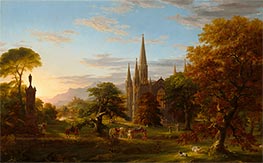
The Return 1837
Oil Painting
$4422
$4422
Canvas Print
$54.62
$54.62
SKU: CTH-19122
Thomas Cole
Original Size: 99 x 160 cm
Corcoran Gallery of Art, Washington, USA
Thomas Cole
Original Size: 99 x 160 cm
Corcoran Gallery of Art, Washington, USA
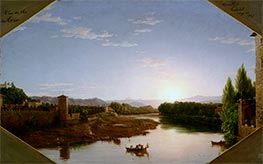
View of the Arno, Near Florence 1837
Oil Painting
$1436
$1436
Canvas Print
$54.62
$54.62
SKU: CTH-19123
Thomas Cole
Original Size: 83.8 x 134.6 cm
Worcester Art Museum, Massachusetts, USA
Thomas Cole
Original Size: 83.8 x 134.6 cm
Worcester Art Museum, Massachusetts, USA

Dream of Arcadia 1838
Oil Painting
$2863
$2863
Canvas Print
$54.62
$54.62
SKU: CTH-19124
Thomas Cole
Original Size: 98 x 159.4 cm
Denver Museum of Art, Colorado, USA
Thomas Cole
Original Size: 98 x 159.4 cm
Denver Museum of Art, Colorado, USA
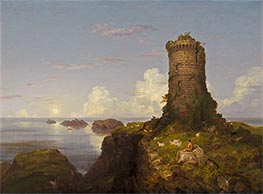
Italian Coast Scene with Ruined Tower 1838
Oil Painting
$1210
$1210
Canvas Print
$60.81
$60.81
SKU: CTH-19125
Thomas Cole
Original Size: 86.4 x 116.8 cm
National Gallery of Art, Washington, USA
Thomas Cole
Original Size: 86.4 x 116.8 cm
National Gallery of Art, Washington, USA
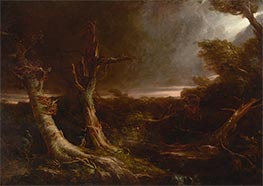
Tornado in an American Forest 1831
Oil Painting
$1516
$1516
Canvas Print
$58.55
$58.55
SKU: CTH-19126
Thomas Cole
Original Size: 117.8 x 164 cm
National Gallery of Art, Washington, USA
Thomas Cole
Original Size: 117.8 x 164 cm
National Gallery of Art, Washington, USA
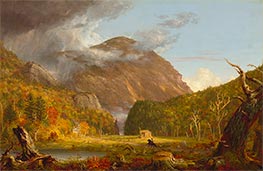
A View of the Mountain Pass Called the Notch of ... 1839
Oil Painting
$1741
$1741
Canvas Print
$54.62
$54.62
SKU: CTH-19127
Thomas Cole
Original Size: 102 x 155.8 cm
National Gallery of Art, Washington, USA
Thomas Cole
Original Size: 102 x 155.8 cm
National Gallery of Art, Washington, USA
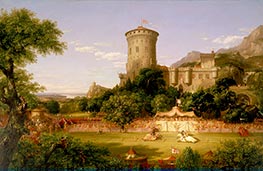
The Past 1838
Oil Painting
$8771
$8771
Canvas Print
$54.62
$54.62
SKU: CTH-19128
Thomas Cole
Original Size: 103 x 153.7 cm
Five College Museum, Massachusetts, USA
Thomas Cole
Original Size: 103 x 153.7 cm
Five College Museum, Massachusetts, USA
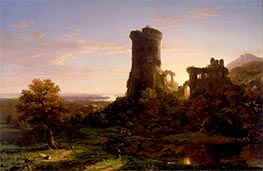
The Present 1838
Oil Painting
$1690
$1690
Canvas Print
$54.62
$54.62
SKU: CTH-19129
Thomas Cole
Original Size: 103.5 x 156.5 cm
Five College Museum, Massachusetts, USA
Thomas Cole
Original Size: 103.5 x 156.5 cm
Five College Museum, Massachusetts, USA
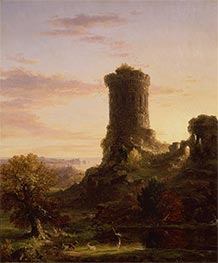
Landscape with Tower in Ruin 1839
Oil Painting
$1108
$1108
Canvas Print
$68.48
$68.48
SKU: CTH-19130
Thomas Cole
Original Size: 55.8 x 47.3 cm
Currier Museum of Art, New Hampshire, USA
Thomas Cole
Original Size: 55.8 x 47.3 cm
Currier Museum of Art, New Hampshire, USA
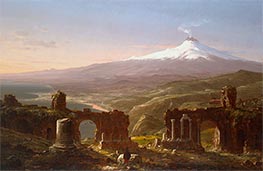
Mount Etna From Taormina, Sicily 1843
Oil Painting
$1763
$1763
Canvas Print
$54.62
$54.62
SKU: CTH-19131
Thomas Cole
Original Size: 81.2 x 122 cm
Wadsworth Atheneum, Hartford, USA
Thomas Cole
Original Size: 81.2 x 122 cm
Wadsworth Atheneum, Hartford, USA
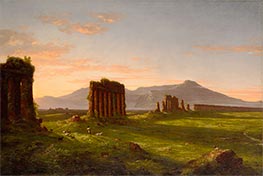
Ruins of Aqueducts in the Campagna di Roma 1843
Oil Painting
$1509
$1509
Canvas Print
$55.39
$55.39
SKU: CTH-19132
Thomas Cole
Original Size: 81.2 x 122 cm
Wadsworth Atheneum, Hartford, USA
Thomas Cole
Original Size: 81.2 x 122 cm
Wadsworth Atheneum, Hartford, USA
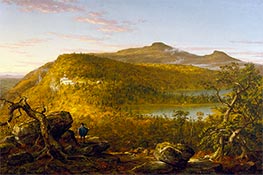
A View of the Two Lakes and Mountain House, ... 1844
Oil Painting
$2890
$2890
Canvas Print
$55.08
$55.08
SKU: CTH-19133
Thomas Cole
Original Size: 91 x 136.8 cm
Brooklyn Museum of Art, New York, USA
Thomas Cole
Original Size: 91 x 136.8 cm
Brooklyn Museum of Art, New York, USA
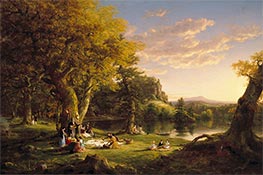
A Pic-Nic Party 1846
Oil Painting
$5680
$5680
Canvas Print
$54.94
$54.94
SKU: CTH-19134
Thomas Cole
Original Size: 121.6 x 137.2 cm
Brooklyn Museum of Art, New York, USA
Thomas Cole
Original Size: 121.6 x 137.2 cm
Brooklyn Museum of Art, New York, USA
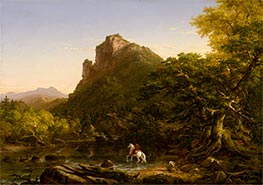
The Mountain Ford 1846
Oil Painting
$1995
$1995
Canvas Print
$58.25
$58.25
SKU: CTH-19135
Thomas Cole
Original Size: 71.8 x 101.8 cm
Metropolitan Museum of Art, New York, USA
Thomas Cole
Original Size: 71.8 x 101.8 cm
Metropolitan Museum of Art, New York, USA
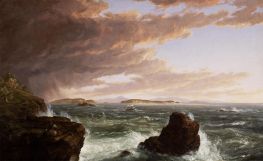
View across Frenchman's Bay from Mt. Desert ... 1845
Oil Painting
$2505
$2505
Canvas Print
$54.62
$54.62
SKU: CTH-19723
Thomas Cole
Original Size: 97.3 x 159 cm
Cincinnati Art Museum, Ohio, USA
Thomas Cole
Original Size: 97.3 x 159 cm
Cincinnati Art Museum, Ohio, USA